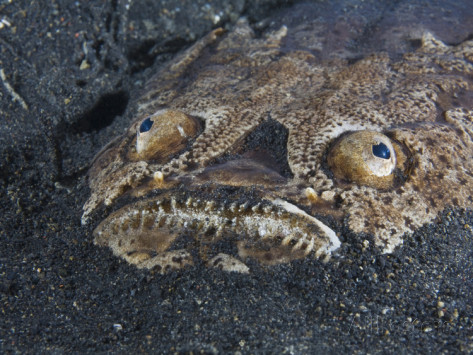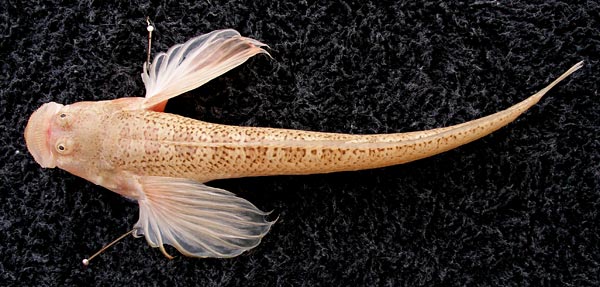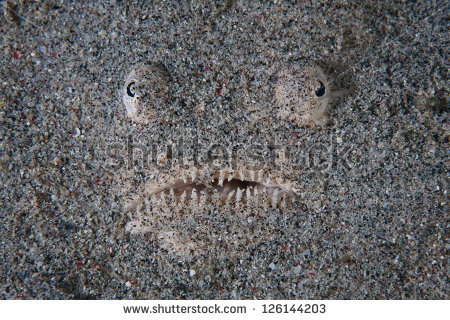
Dactyloscopus tridigitatus
FAMILY
Dactyloscopidae
TAXONOMY
Dactyloscopus tridigitatus Gill, 1859, Barbados.
OTHER COMMON NAMES
Spanish: Mirуn ojilargo.
PHYSICAL CHARACTERISTICS
May reach lengths of 3 in (75 mm). A distinctive Atlantic sand
stargazer with the eye perched on a slender stalk on top of the
head. It differs from other Atlantic sand stargazers in that it has
a tube in the last lateral line scale at the base of the caudal fin.
DISTRIBUTION
Bermuda, northeastern Gulf of Mexico, Bahamas, and the
Caribbean as far as Brazil.
HABITAT
Soft, sandy bottoms from shallow water off beaches to depths
of 98 ft (30 m).
BEHAVIOR
Burrows into the sand with only the stalked eyes on the top of
the head exposed.
FEEDING ECOLOGY AND DIET
It is predatory on small prey, presumably invertebrates, but the
sand stargazer has not been observed feeding.
REPRODUCTIVE BIOLOGY
Oviparous. Males and females mature at about 1.8 in (45 mm)
in length. Spawning had not been observed as of 2002.
CONSERVATION STATUS
Not listed by the IUCN. Pollution is the biggest potential
threat.
SIGNIFICANCE TO HUMANS
None known.
Photo Gallery of - Sand stargazer





 Animalia Life
Animalia Life